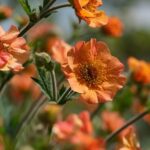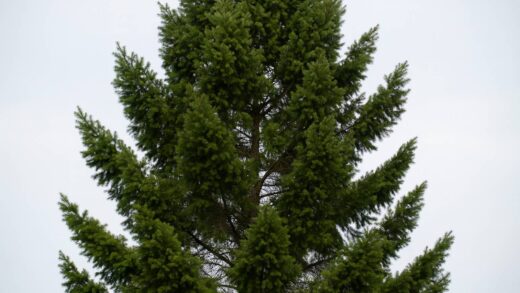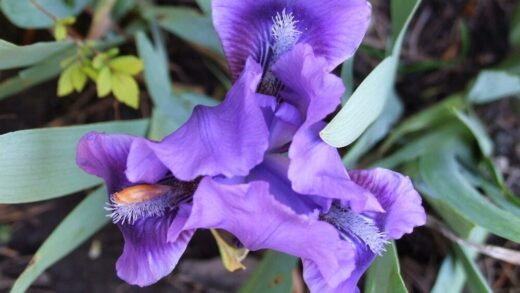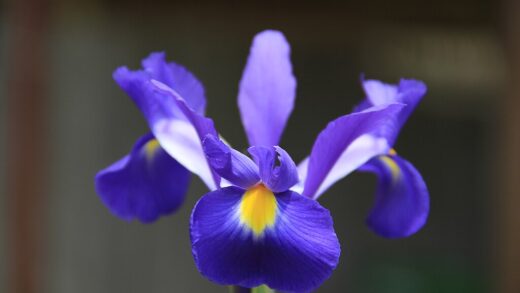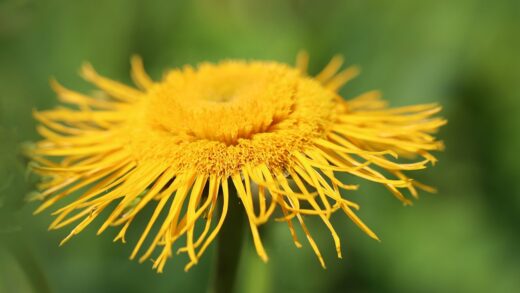Light is the fundamental source of energy for nearly all plants, and for the Dieffenbachia, providing the correct intensity and duration of light is paramount to its health, appearance, and growth. This foliage plant is prized for the beauty of its large, often variegated leaves, and the vibrancy of these patterns is directly influenced by the quality of light it receives. As an understory plant in its native tropical rainforest habitat, it has adapted to thrive not in the harsh, direct rays of the sun, but in the dappled, filtered light that makes its way through the dense tree canopy. Replicating these specific light conditions within an indoor environment is the key to cultivating a lush and stunning specimen.
Understanding the concept of “bright, indirect light” is the first step for any Dieffenbachia owner. This term describes a level of illumination that is bright enough to read by comfortably but where the sun’s rays are not falling directly onto the plant’s foliage. Direct sun, especially in the afternoon, is far too intense and will scorch the leaves, causing irreparable damage. Conversely, insufficient light will lead to a different set of problems, including weak, leggy growth and the loss of the characteristic variegation that makes many cultivars so desirable. The plant’s health is a constant balancing act between too much and too little light.
The placement of the plant within a room is therefore a critical decision that directly controls its light exposure. The direction a window faces, the time of year, and the presence of any obstructions like trees or buildings outside, or even sheer curtains inside, all play a role in determining the light conditions in a particular spot. Learning to “read” the light in your home and understanding how it changes throughout the day and across the seasons will enable you to find the perfect location for your Dieffenbachia to flourish.
Observing the plant’s own feedback is perhaps the most valuable tool a grower has. The leaves of a Dieffenbachia are excellent indicators of whether its light needs are being met. By paying close attention to the color, pattern, and growth habit of the foliage, one can make informed adjustments to the plant’s position, fine-tuning its environment to provide the ideal level of illumination. This responsive approach to care ensures the plant not only survives but truly thrives, showcasing the full splendor of its tropical foliage.
The role of light in plant health
Light is the essential ingredient that powers the process of photosynthesis, the remarkable mechanism by which plants convert light energy, water, and carbon dioxide into glucose—the sugary fuel they need to grow and function. Within the plant’s leaf cells are specialized organelles called chloroplasts, which contain the pigment chlorophyll. It is this chlorophyll that absorbs light energy and gives plants their green color. For a Dieffenbachia, efficient photosynthesis is what allows it to produce the energy required to maintain its large leaves, develop a strong root system, and support new growth.
More articles on this topic
The intensity of light directly affects the rate of photosynthesis. In low light conditions, the process slows down significantly, meaning the plant produces less energy. This energy deficit leads to a variety of symptoms: growth becomes slow and stunted, new leaves may be smaller than previous ones, and the plant may start to shed its lower leaves as it can no longer support a large amount of foliage. The overall vigor of the plant declines, making it more susceptible to pests and diseases. Providing adequate light is akin to providing adequate food for the plant’s survival.
In variegated cultivars of Dieffenbachia, light plays an even more crucial role in their appearance. The white, cream, or yellow portions of the leaves lack chlorophyll and therefore cannot photosynthesize. These areas are essentially an energy drain on the plant, supported by the green parts of the foliage. In lower light conditions, the plant will try to compensate for the reduced energy production by increasing the amount of chlorophyll in its leaves. This results in the beautiful variegation fading, with the leaves reverting to a more solid green color as the plant prioritizes survival over ornamentation.
The duration of light exposure is also important. Plants have internal circadian rhythms and can sense the length of the day, which influences their growth cycles. During the long days of summer, with more hours of bright light, the Dieffenbachia is stimulated into its active growth phase. In the shorter days of winter, the reduced duration of light signals the plant to slow down and enter a period of rest or dormancy. This is a natural cycle, and it is important to provide the brightest possible location during winter to help the plant maintain its energy stores until spring.
Defining ideal light conditions
The ideal light condition for a Dieffenbachia is universally described as “bright, indirect light.” This can be found in a location that is brightly illuminated for most of the day but is shielded from the direct, scorching rays of the sun. An east-facing window is often considered perfect. It provides several hours of gentle, direct morning sun, which is not intense enough to cause damage, followed by bright, indirect light for the remainder of the day. This combination offers ample energy for photosynthesis without the risk of burning the foliage.
More articles on this topic
A west-facing window can also be suitable, but it requires more careful management as the afternoon sun is much hotter and more intense than the morning sun. If placed in a west-facing window, the Dieffenbachia should be set back several feet from the glass or protected by a sheer curtain to diffuse the direct rays. Similarly, a south-facing window provides the most intense light throughout the day, so a Dieffenbachia should never be placed directly in it without significant filtering. It is better to position it off to the side or further into the room where it still receives bright ambient light.
A north-facing window typically provides the lowest light levels and is often insufficient for a Dieffenbachia to thrive, especially for highly variegated cultivars. While the plant might survive in a north-facing window, its growth will likely be slow, and it may become leggy and lose its variegation over time. If a low-light location is the only option, it is best to choose a Dieffenbachia cultivar that is known to be more tolerant of lower light, such as those with darker, more solid green leaves.
It is important to remember that the intensity of light drops off exponentially with distance from a window. A spot that is just one meter away from a window receives significantly less light than a spot right on the windowsill. Therefore, “bright, indirect light” usually means a position within a meter or two of a suitable window. Observing the shadows in a room can be a helpful guide; a location with a soft, fuzzy shadow is indicative of bright, indirect light, whereas a spot with a sharp, clearly defined shadow receives direct sun.
Recognizing signs of incorrect lighting
The foliage of a Dieffenbachia serves as an excellent diagnostic tool for assessing its light conditions. One of the most common signs of insufficient light, or etiolation, is the development of “leggy” growth. The plant will begin to stretch towards the available light source, resulting in abnormally long spaces between the leaves on the stem, known as internodes. This creates a sparse, spindly appearance rather than a full, bushy one. The new leaves that do develop may be smaller than usual and the overall growth rate will be noticeably slow.
Another clear indicator of too little light, particularly in variegated varieties, is the loss of coloration. As the plant struggles to produce enough energy, it will increase its chlorophyll production to maximize the efficiency of photosynthesis in the low light. This causes the white, cream, or light green patterns on the leaves to diminish and fade, with the foliage reverting to a darker, more solid green. While this is a survival mechanism for the plant, it detracts from the ornamental quality for which it is grown. If you notice your variegated Dieffenbachia becoming progressively greener, it is a definitive sign that it needs to be moved to a brighter location.
On the other end of the spectrum, providing too much light can be equally, if not more, damaging. The most obvious symptom of excessive direct sun exposure is sunburn, or leaf scorch. This appears as brown, dry, or crispy patches on the leaves, especially in the areas most directly exposed to the sun. The leaves may also look pale, washed-out, or yellowish, as the intense light can cause the chlorophyll to break down, a process known as photo-oxidation. This damage is permanent, and the scorched parts of the leaf will not recover.
In addition to visible scorch marks, a plant receiving too much light may also show signs of stress such as wilting during the hottest part of the day, even if the soil is moist. This occurs because the leaves are losing water through transpiration faster than the roots can absorb it. The leaves may also curl inwards in an attempt to reduce the surface area exposed to the intense light. If any of these symptoms are observed, the plant must be moved immediately to a location with more protection from direct sunlight.
The role of artificial lighting
In situations where sufficient natural light is not available, such as in a basement apartment, a dark office, or during the dim winter months, artificial lighting can be an excellent way to supplement or even completely provide for a Dieffenbachia’s light requirements. Not all light bulbs are suitable for growing plants; standard incandescent bulbs, for instance, produce too much heat and not the right spectrum of light for photosynthesis. The best option is to use lights specifically designed for plant growth, commonly known as grow lights.
Modern grow lights typically use LED technology, which is highly efficient, produces very little heat, and can be designed to emit the specific wavelengths of light—primarily blue and red—that plants use most effectively for photosynthesis. Full-spectrum LED grow lights are also available, which emit a white light that is more aesthetically pleasing to the human eye while still providing all the necessary wavelengths for the plant. Fluorescent bulbs, particularly T5 high-output types, are another effective and affordable option for growing indoor plants.
When using artificial light, the distance of the light source from the plant is crucial. The light intensity decreases significantly with distance, so the light needs to be positioned relatively close to the plant, typically between 30 to 60 centimeters (12 to 24 inches) above the foliage, depending on the strength of the light. The light should also be left on for a consistent period each day, generally mimicking a natural day length of about 12 to 14 hours. Using an automatic timer is the best way to ensure this consistency.
Using grow lights can allow you to place a Dieffenbachia almost anywhere in your home, freeing you from the constraints of window placement. It is a particularly useful strategy for helping the plant get through the dark winter months without becoming leggy or losing its variegation. A simple clamp-on grow light bulb directed at the plant can make a significant difference in its health and appearance during the period when natural light is at its lowest.












